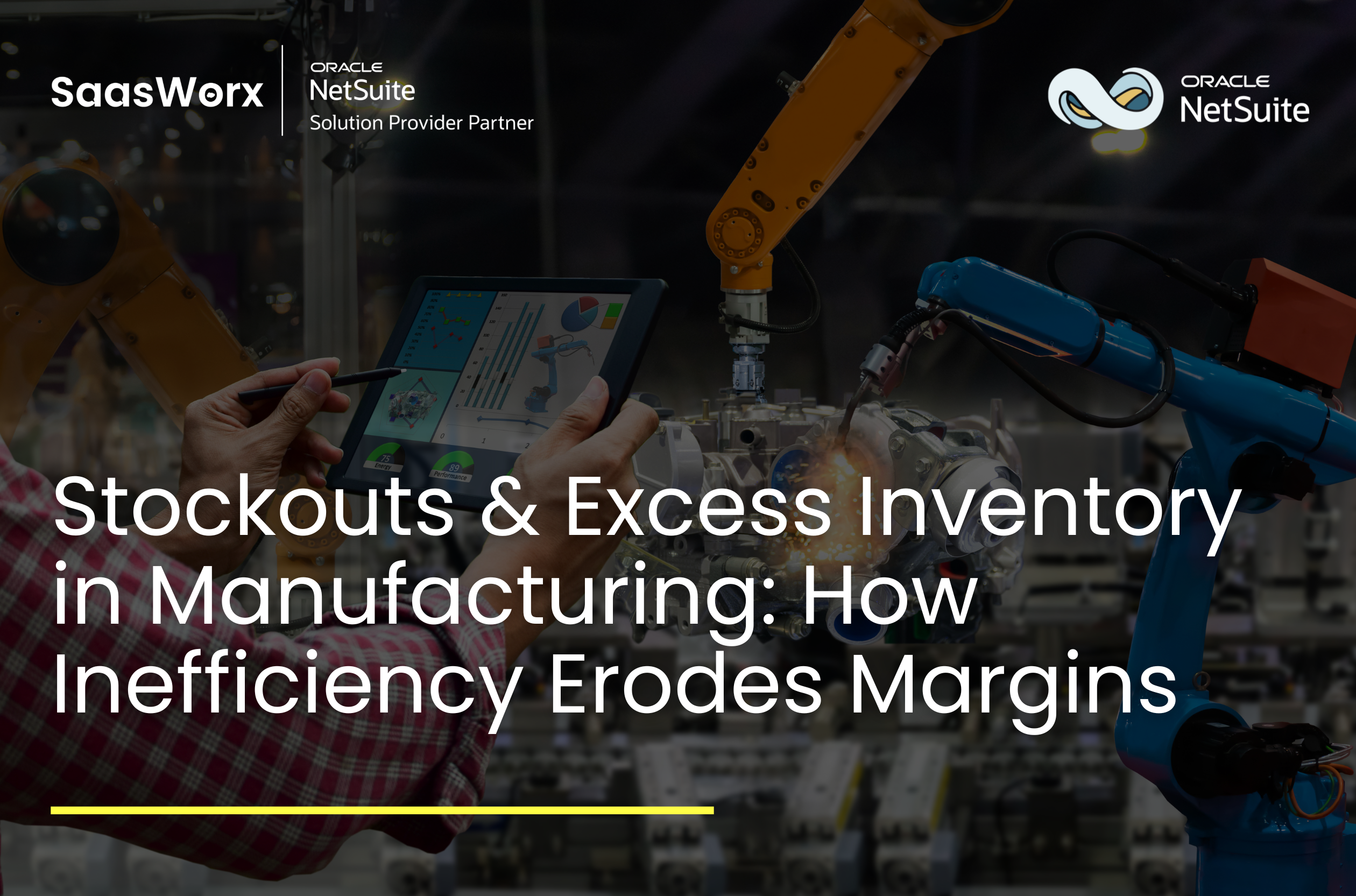

Manufacturers walk a tightrope between running out of parts and piling up unused stock. A stockout happens when you run completely out of a needed item. The NetSuite definition explains that a stockout means a product is “exhausted in inventory and, therefore, unavailable to fulfill an order”. In practice, this frustrates customers and forces rushed fixes. For example, if an auto parts maker suddenly can’t ship brake components, it may have to air-freight new parts at great cost or cancel orders outright. NetSuite warns that “stockouts directly impact customer satisfaction” and often lead to “extra costs and loss of sales or — worse — customers”. Lost revenue from even a few missed orders can quickly erode tight profit margins.
On the other hand, excess inventory (overstock) is when a manufacturer holds more stock than it can sell. This ties up cash and incurs carrying costs. Suppliers, warehousing, insurance, utilities and labor all add up, and slow-moving goods risk obsolescence. NetSuite notes that higher-than-needed inventory “can cause margin erosion from increased storage, utilities, security and labor costs”. In short, money sitting in pallets of parts is cash that can’t be used elsewhere. The result: both stockouts and overstocks are inefficiencies that eat into profits.
Key impacts of this imbalance include:
These hidden costs squeeze margins. NetSuite experts describe poorly managed inventory as causing “profit margin depression” through both revenue leakage and added costs. In effect, every wasted rupee on shipping or storage is a rupee lost from the bottom line.
Several common issues create these inventory imbalances:
In short, the lack of visibility and agility creates blind spots. One warehouse manager put it simply: “We only find out we have an inventory problem when the phone rings with a rush order or a missed shipment.”
In this busy warehouse aisle, every empty pallet or unopened carton represents capital at rest. Inefficiencies like unused stock or sudden shortages hamper throughput and tighten margins.
Consider an Indian auto-parts supplier that made steering components. Before updating its systems, the company kept huge safety buffers “just in case.” When a set of machines unexpectedly broke down, they ran out of a key part. To honor urgent export orders, management had to air-ship parts from a distant plant at three times the normal cost. Meanwhile, other component bins were overflowing with slow-moving parts. This imbalance cost profit in two ways: the rush shipping cut into margin, and the excess parts tied up working capital on which the company paid storage and insurance.
After the firm adopted a cloud-based ERP with demand planning tools, the results improved. Inventory turned over faster. The system highlighted low stock levels before orders were missed, allowing planned replenishment. Suddenly the warehouse was fuller of moving parts and emptier of dead stock. The company reports cutting emergency shipments by about half and reducing inventory carrying cost. This kind of efficiency gain is no fluke: analysts find that data-driven forecasting and integrated systems can sharply cut both stockouts and overstocks over time.
The good news is manufacturers can take concrete steps to fix this:
Advanced planning software and analytics are a big help. As one industry analysis notes, “Excess inventory ties up capital, while lean inventories increase the risk of stockouts. Advanced analytics and demand forecasting tools help strike the right balance”. In practice, this might mean using AI or statistical models to predict demand and automatically suggest optimal order quantities.
Ultimately, technology ties it all together. Cloud ERP systems give managers a 360° view of inventory, orders and production. For instance, SaasWorx notes that NetSuite ERP “provides a single, cloud-based platform to automate production planning, inventory management, and supply chain operations”. In other words, one system tracks raw materials, work-in-progress and finished goods in real time. When a part count drops below a set level, the system can flag it or auto-create a purchase order. If an urgent order comes in, the ERP shows where stock exists (across plants or warehouses) so fulfillment can be managed. This level of control turns surprises into planned actions.
After implementing such an ERP, companies often see dramatic improvements. One partner writes that manufacturers using modern ERP solutions “gain real-time visibility, optimize production, and deliver superior products and customer experiences”. In our earlier example, once the auto-parts supplier had connected systems, it rarely experienced a true stockout. Orders could be split intelligently between facilities, and production schedules adjusted on the fly. The same software also alerted the team when inventory piled up, so purchasing could be throttled back or sales promotions initiated.
In short, an integrated system helps seal the leaks in margin that arise from inventory issues. SaasWorx explains that with NetSuite ERP, manufacturers can “automate manual workflows, unify multi-site operations, and gain end-to-end visibility into production and supply chain”. This kind of automation and visibility reduces human error, eliminates wasted time on counts and spreadsheets, and aligns production with actual demand.
Inventory imbalance is more than an annoyance – it is a profit-killer. In manufacturing, running too lean can mean lost orders and rushed costs; running too heavy means wasted cash and growing expenses. Both hurt the bottom line. The solution lies in smarter planning and systems. By using better forecasting, lean practices, and a unified ERP like NetSuite, companies gain the visibility to get inventory “just right.” As one NetSuite guide puts it, balancing inventory effectively is fundamental: it keeps costs down and makes manufacturing “more profitable”. In a competitive market, fixing stockouts and overstocks is not optional – it’s essential to protect margins.
Manufacturers that modernize their supply chains can flip this script. By preventing stockouts before they happen and trimming excess stock to what’s needed, they turn inefficiency into opportunity. The result is steadier workflows, happier customers, and healthier profits – a win-win that keeps the wheels of industry turning smoothly.
Key Takeaways:
By addressing both sides of the inventory problem, manufacturers can safeguard margins and build a more resilient operation.